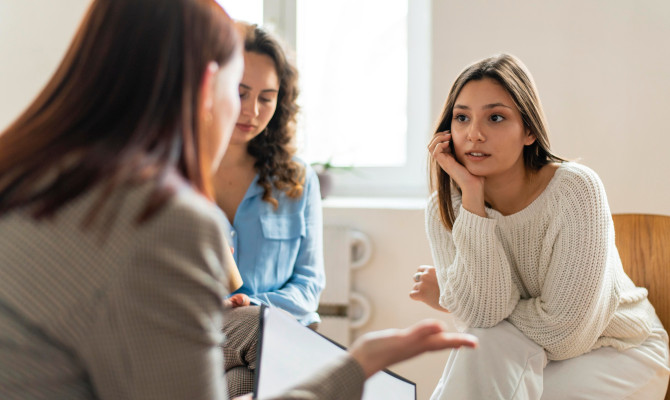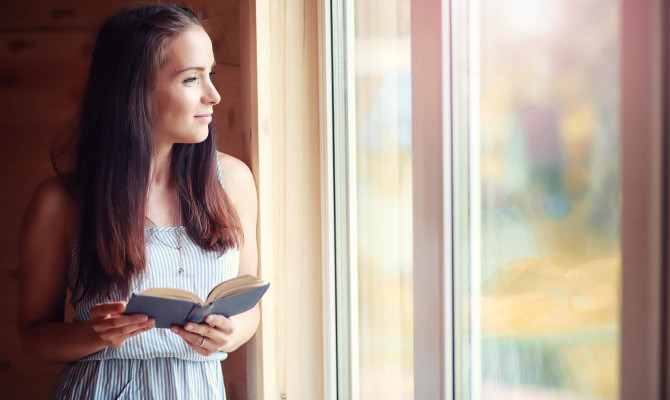Bipolar disorder and its management

- Bipolar
- 14 Aug 2023
Overview
Introduction to bipolar disorders
A person with bipolar disorder experiences abrupt and extreme changes in their overall mood, liveliness, and thinking capacity.
This is a serious mental illness that could last lifelong and may cause an inability to carry out one’s daily activities because of the extreme mood swings one usually experiences. 1Introduction of Bipolar disorder | Researched based study from Agency for Healthcare research and quality
Mania and sadness are highs and lows that people with bipolar disorder experience, which are distinct from the normal ups and downs most people go through. These extreme states of mind, may alternate or occur simultaneously. There may also be episodes of normal mood in between, called euthymic episodes. 2Introduction of bipolar disorder | Researched based study from Int J Health Allied Sci (
Mania is a change in mood that can make you feel energized, or excessively irritated. Some may experience sadness or a sense of hopelessness while they are depressed. Mood swings are a deviation from one’s usual self, which is an important component of this disorder.

Types
What are the types?
Bipolar disorders can be classified into a few types based on the diagnostic and statistical manual of mental disorders, 5th edition (DSM-5): 3Types of bipolar disorder| Researched based study from DSM-5
Bipolar I disorder (BD-I)
- A period of manic behavior lasting at least a week.
- Extreme manic episodes may need hospital treatment.
- Some might experience both mania and depression, even though depression is not necessary for the diagnosis.
- Other conditions, such as schizophrenia and psychotic disorders, must be ruled out by the clinician.
Bipolar II disorder (BD-II)
- Some may go through a few depressive periods.
- At least one episode of hypomania may occur.
- Never go through a complete manic episode.
- While a person suffering from hypomania may feel okay and be able to function normally, their mood won’t be stable, and there is always a chance that depression will develop later.
- Mood swings may not be caused by any other conditions.
- This type is commonly thought of as a less intense kind, although it is just different for many people.
Cyclothymic disease
- There have been several instances of hypomanic symptoms in adults over a minimum of two years and numerous instances of depressive symptoms but not a hypomanic episode.
- It is a long-term, mildly depressive mood disorder characterized by chronic hypomania and mood instability.
- There may be brief occurrences of normal mood that persist no longer than eight weeks.
BD otherwise specified or unspecified
- If a person is not yet identified with bipolar I, II, or cyclothymic disorder but has still gone through periods of clinically substantial unusual mood elevation.
- Major depressed bouts and hypomanic episodes may last 1-2 days.
Symptoms

Signs and symptoms
There are a few symptoms associated with each episode of mania, hypomania, and euthymia or mixed episodes as follows.
- Symptoms of the high/manic episodes may include:
- Extreme excitement or joy.
- A sudden shift from happiness to irritation and anger.
- Having an exceptional sense of importance and strength.
- Poor impulse control and decision-making, as seen in cases where people abruptly leave their jobs.
- Rapid speech without proper thinking.
- Setting ambitious but illogical plans.
- Unusually energetic and may not feel the need to sleep.
- Having trouble focusing.
- Restlessness.
- Appetite loss.
- Risk-taking and immoral behavior results in drug and alcohol misuse.
- Very strong sex desire resulting in having unsafe or unprotected sex.
- Being not so concerned about the bad outcomes of their behavior.
- May experience hallucinations and delusions in an extreme manic state.
- BD patients in extreme manic episodes may experience suicidal thoughts.
Symptoms of the low/depressive episodes may include:
- Feeling depressed or miserable.
- Sadness that overflows.
- Poor energy and exhaustion.
- A lack of enthusiasm.
- Lack of concentration.
- Sluggish speech.
- Irritability.
- Lower sex drive.
- Being hopeless.
- Worthlessness.
- Need more rest.
- Prolonged sobbing.
- Insomnia or oversleeping.
- You may stop doing things that you usually enjoy.
- A change in appetite.
- Thoughts of death or suicide.
- Attempting suicide.
Symptoms of a mixed episode may include:
- May have excessive energy, restlessness, and agitation similar to a manic episode.
- It’s also possible for someone to go through both extremes quickly or simultaneously.
- Mixed episodes are frequently cited as the worst aspect of bipolar disorder by those who have experienced them.
Causes
Causes and risk factors
The exact cause of BD is still unknown, but several factors may be contributing to it, such as:
Genetic factors
- Bipolar disease increases a child’s likelihood of having it if any of their blood relatives also have the disorder. 4Causes of bipolar disorder| Researched based study from bmj.com
- However, the influence of genetics is not always there; a child with a family history of bipolar disorder might not experience the disorder themselves.
Age
- It usually starts at the age of 25 years.
- But it may also develop in teens or children.
Biological traits
- Hormonal imbalances may play a role.
- Imbalances in the neurotransmitters may affect the brain.
- The average size or activation of certain brain areas are two tiny physical alterations that people with BD appear to have.
Environmental factors
- Prenatal viral infections- bipolar disorder is among the mental diseases linked to prenatal viral infections. 5Environmental factors for bipolar disorder | Researched based study from nih.gov
- Childhood maltreatment may increase the risk for the later development of the bipolar disorder. 6responsible factors for bipolar disorder | Researched based study from nih.gov
- History of emotional abuse is most frequently found in bipolar patients. 7Factors responsible for bipolar disorder | Researched based study from nih.gov
- A manic or depressive episode can be brought on by a stressful event, like the death of a loved one or a family member, any long-standing illness, a challenging relationship, going through a divorce, or financial difficulties.
- Abuse of drugs or alcohol.
Diagnosis
Diagnosis of bipolar disorder
Assessment could consist of the following to see if a person has bipolar disorder:
- Physical examination and other tests- to rule out medical diseases with similar symptoms, such as thyroid problems, etc. your doctor may perform a physical examination along with some diagnostic testing, like blood and urine tests.
- Psychological assessment: Doctor might advise to share their emotions, opinions, and patterns of behavior. Close friends or family members may also be called and asked to describe the changes they observe in them.
- Journaling- Some may be requested to keep a daily journal of your moods, habits, sleeping patterns, etc. which could be helpful to diagnose and discover the best course of treatment.
- Bipolar criteria – the doctor may match symptoms to those included in the Diagnostic and Statistical Manual of Mental Disorders (DSM-5) published by the American Psychiatric Association in order to determine whether you have bipolar disorder or a comparable condition.
Prevention
Ways of Prevention
Bipolar disorder cannot be completely prevented. However, there are certain methods that can help keep mild symptoms from developing into full blown bipolar disorder:
- Early symptom management can stop episodes from growing worse.
- Some may have seen a pattern in the items that trigger their bipolar episodes.
- Encourage friends or relatives to help keep an eye out for warning indicators.
- If one suspects a depressive or manic episode is about to start, contact the doctor right once.
- Steer clear of alcohol and drugs as they may aggravate the symptoms and increase the likelihood of BD returning.
Complications
Complications related to bipolar disorder
A bipolar illness diagnosis is a permanent one for the individual. Even though they may experience extended periods of stability, they will always have the syndrome. If prompt treatment is not given, bipolar disorder may result in major issues like:
- Monetary issues.
- Legal issues as after-effects of extreme episodes.
- Strained relationships at home or other places.
- Poor work or low academic performance.
- Drug or alcohol abuse to reduce the severity of symptoms.
- Other mental illnesses, such as anxiety disorders and attention-deficit hyperactivity disorder (ADHD).
- Suicidal ideas or attempts.
Emergency
When do you need medical help?
- If you exhibit any symptoms of mania or depression, speak with a healthcare provider or a mental health professional.
- Bipolar disorder symptoms do not disappear by themselves. You can manage your symptoms by seeking medical help from a mental health specialist with knowledge of bipolar illness.
- If you have suicidal thoughts or actions in a suicidal way, you need to get medical care right away. In this situation, you can also phone your local emergency number right away or confide in a close member or friend or dial a suicide hotline.
- Assure a loved one who is thinking about suicide or has already tried it has someone staying with them. Call the nearest emergency number without delay. Alternatively, if you believe it to be safe to do so, take the patient to the emergency room of the closest hospital.
Management
Management of bipolar disorders

The purpose of treatment is to decrease the intensity of symptoms and stabilize the patient’s mood. The objective is to enable the person to carry out daily activities successfully. There are numerous techniques to treat bipolar disorder, including:
Medications:
- Mood stabilizers: Carbamazepine, lamotrigine, lithium, or Valproate.
- Second-generation antipsychotics (SGAs) like Cariprazine, Lurasidone, Olanzapine-fluoxetine combination, Quetiapine, Olanzapine, and lumateperone.
- Benzodiazepines and other sedatives, such as those used to treat insomnia or anti-anxiety medications. 8Management of bipolar disorder| Researched based study from nih.gov
- Antidepressants to relieve depression.
- Anticonvulsants, to relieve mania.
- A combination of antidepressants- antipsychotics.
- Antipsychotic- mood stabilizers combination.
Psychotherapy or talk therapy includes:
- Psychoeducation: Because bipolar disorder is a complicated condition, knowing about it and how it might affect a person’s life can help people manage and live with it better.
- Interpersonal and social rhythm therapy (IPSRT): recognizing and understanding one’s biological and social cycles, and setting a proper routine for everything including sleeping, eating, etc. helps an individual to keep their mood stable.
- Family-focused therapy: This creates a network of support to aid in treatment and enables your loved ones to identify the start of an episode and handle it properly.
- Cognitive behavioral therapy (CBT): Through CBT, one can swap out negative behaviors and patterns for more constructive ones. Also, it might assist in learning how to control negative triggers like stress.
Alternative treatment
Alternative treatment options
- Acupuncture – may be effective in treating depression in bipolar patients.
- Electroconvulsive therapy (EPT)- Little electrical shocks nudge the brain, causing a brief seizure that resets the chemical balance in the brain. One won’t feel any pain because ECT uses a general anesthetic, which will put people to sleep throughout the process.
- Transcranial magnetic stimulation (TMS)- A brief electromagnetic coil used in this therapy sends a current of electricity into your brain. In rare cases, doctors will use it to treat depression that has not responded to medication. It is a suitable alternative to ECT. This does not require general anesthesia and is not painful.
- Thyroid medications- occasionally have mood-stabilizing effects. Rapidly cycling bipolar disease is notoriously difficult to treat, however, studies have shown that symptom reduction is possible.
- Light therapy- Bipolar depression that has worsened during a less severe seasonal episode may also be treated with light treatment.
- Ketamine treatment- It has been established that giving low doses of the anesthetic ketamine via IV will have short-term antidepressant and anti-suicidal benefits in bipolar disorder patients.
- Hospitalization- When someone is having a severe manic or depressive episode and poses an immediate threat to himself or others, it becomes unavoidable.
Lifestyle
Lifestyle modifications in bipolar disorder
To interrupt behavior cycles that exacerbate your bipolar disorder, you’ll likely need to make some modifications to your way of living, as follows:
- Maintain a regular sleep schedule and take precautions to avoid sleep disruption
- Keep a consistent schedule
- Engage in frequent, intense activity, such as jogging, swimming, etc. which can reduce anxiety and depression, improve sleep quality, and support heart and brain health
- Eat a balanced diet rich in nutrients
- Get the ability to identify mood fluctuations
- Document your symptoms
- Maintaining a journal of daily thoughts, feelings, and actions might help gauge how well a person’s therapy is working or help them see potential manic or depressive episode triggers
- Develop stress management skills – It can be beneficial to practice relaxation techniques like meditation, yoga, mindfulness, massage, or others
- Look for enjoyable activities or sports
- Avoid alcohol consumption and recreational drug usage
- Avoid using tobacco
- Surround yourself with supportive friends and family
- Maintain healthy relationships and let go of toxic people
- Consult your physician before beginning any workout regimen
- Have a balanced diet
- Before beginning any additional prescriptions provided by other doctors to treat any additional symptoms, consult your physician
- Join a group that offers support. In support groups for bipolar disorder, you can interact with people who are going through comparable difficulties and gain knowledge from their experiences
Prognosis
Prognosis of bipolar disorder
- If bipolar disorder is not effectively treated, the prognosis is frequently terrible.
- It is a chronic disease that requires continued treatment.
- When a person struggles with drug or alcohol abuse in addition to having four or even more mood swing episodes annually, it is far more difficult to treat them.
- Many other people with bipolar disease who receive the right care can lead happy, fruitful lives.
- Manic and depressive episode frequency can be decreased by taking medication regularly.
Takeaway
Key Takeaways
Sometimes it can take months or even years for you and your healthcare professional to come up with a thorough treatment plan that is effective for you. Even though this could be frustrating, it’s crucial to keep up with your treatment. By being able to identify the signs and causes of these crises, one has a better chance of receiving good care and discovering coping mechanisms that could help prevent prolonged sickness, lengthy hospital visits, and suicide.
Any feedback on this article?
 This Articles content was accurate
This Articles content was accurate Very Informative Article
Very Informative Article I have a question or a comment
I have a question or a comment
 This article contains inaccurate content
This article contains inaccurate content This article was not helpful
This article was not helpful I have a question or a comment
I have a question or a comment
We appreciate your helpful feedback!
Checkout our social pages
References
-
Agency for Healthcare Research and Quality's
Treatment for Bipolar Disorder in Adults: A Systematic Review. Comparative Effectiveness
-
International Journal of Health and Allied Sciences
Study of socio-demographic profile, phenomenology, course and outcome of bipolar disorder in Indian population
-
Diagnostic and Statistical Manual of Mental Health Disorders
The Diagnostic and Statistical Manual of Mental Health Disorders | Types
-
Jmg.bmj.com
Genetics of bipolar disorder | causes
-
National Institutes of Health
Association Between Prenatal Exposure to Maternal Infection and Offspring Mood Disorders: | causes
-
National Institutes of Health
Childhood trauma in bipolar disorder | Causes
-
National Institutes of Health
Impact of childhood abuse on the clinical course of bipolar disorder | Causes
-
National Institutes of Health
Bipolar Disorder | Management





































